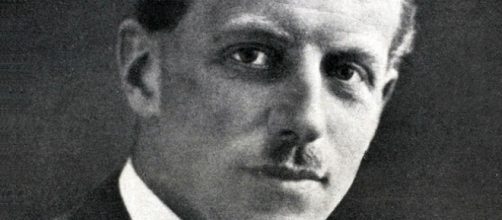Who was Max Woosnam?
You could be forgiven forhaving never heard the name Max Woosnam before, but by the time you've finished reading this article it's unlikely that you'll ever forget the name again.
If we cast our minds back to our school days, I'm sure that we can all think of at least one person who was bothinfuriatingly and inexplicablytalentedat almost every sport. Whilst the rest of us labored forhours to masterthe basics of top spin on the Tennis courts or defending in the cricket nets,we can all recognizethat envy-inducing feeling of seeing a friend pick up a bat, racket, ball, or stick and play as if they've been doing it for years.
Fortunately for us mere mortals,athletes have a tendency to specialize in a particular discipline as they journey through their education. Former England international rugby union starUgo Monyeconsistently ranOlympic qualifying times over 100m at the age of 17, but ultimately opted for a career in rugby union rather thanathletics. The same can be said for many USsprinters whoperhaps failed to reach the heights of the world stage, but were still able to transition their natural speed into becoming outstanding wide receivers in the NFL.
However, with these examples and countless others, there is often one raw talent which can then be adapted to suit other uses.It's easy to understand that the speed of a sprinter could be effective in rugby or the NFL, or that the power of a weightlifter could be effective in a cage or ring, yet there are a few gifted souls who are able to perform seamlessly at an elite level using a wide array of talents.
Woosnam: a brief history
Born in Liverpool in 1892, Max Woosnam's sporting talents were clear from his youth,representing Cambridge University at football, cricket, tennis, and golf.His progress was halted in 1914 as he served with the British Armed Forces in World War I, however, he wasted no time in returning to amateur sports after the conflict.
Woosnam, a notoriously heavy smoker, once describedthe idea of being a professional sportsman as "vulgar," and so his commitments to football and tennis were undertaken outside of his work hours. He reached the final of the All England Plate tournament at Wimbledon in 1919 having played for Chelsea Football Club, and, over the following two years, won Doubles titles at both the Olympics and Wimbledon.
In spite of his successes with Chelsea FC and on the tennis courts, Woosnam's work took him to Manchester where he signed amateur terms with Manchester City. After initially only agreeing to play in home matches so as not to affect his job, he was ultimately threatened with the sack by his employers unless he committed to playing in away games as well, such was his importance to the team.
Shortly after signing, he was made captain and still to this day remains the onlyamateurto have captained Manchester City Football Club since they turned professional in 1894.Although he remained as an amateur at the club, his reputation in the professional game continued to grow and he eventually became a full England international, captaining the side from his favored center back position.
An inspiration amongst his peers, he was asked to lead the British football team at the 1920 Olympics, butrefused on the grounds that he had already committed to leading the tennis team at the same Games -- something which later saw him go on to captain the GB Davis Cup team.
A remarkable winner in all facets of his life, Woosnam achieved a string of other impressive accolades before his death in 1965, including:
- Hitting a century at Lords
- Scoring a perfect 147 break at snooker
- Beating Charlie Chaplin at table tennis using a butter knife instead of a bat
In today's world of professional sports, it's unlikely that we'll ever see the likes of Max Woosnam again, which is whyhe should always be heraldedas a legend of thepolymaths.

